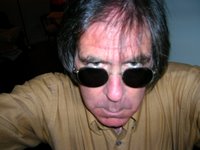 Radio station KDKA, in Pittsburgh, Pennsylvania, was the first licensed commercial radio station. On the 2nd in 1920, the station began its life by broadcasting the results of that year’s Presidential elections. Warren G. Harding decisively beat Franklin D. Roosevelt with a score of 404 electoral votes for Harding and 127 for FDR.
Radio station KDKA, in Pittsburgh, Pennsylvania, was the first licensed commercial radio station. On the 2nd in 1920, the station began its life by broadcasting the results of that year’s Presidential elections. Warren G. Harding decisively beat Franklin D. Roosevelt with a score of 404 electoral votes for Harding and 127 for FDR.
Robert Trow, who would become well known by virtue of his playing the characters of Bob Dog and Robert Troll on Fred Rogers’ show, Mr. Roger’s Neighborhood, got his start at this radio station.
 On the 4th in 1825, the Erie Canal was officially completed. New York’s Governor DeWitt Clinton officiated at the Wedding of the Waters ceremony during which he poured water from Lake Erie in to the water of New York Harbor. It is interesting that they chose to hold a wedding ceremony because the Erie Canal can’t really be said to be straight.
On the 4th in 1825, the Erie Canal was officially completed. New York’s Governor DeWitt Clinton officiated at the Wedding of the Waters ceremony during which he poured water from Lake Erie in to the water of New York Harbor. It is interesting that they chose to hold a wedding ceremony because the Erie Canal can’t really be said to be straight.







